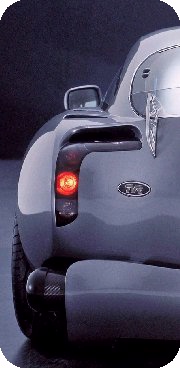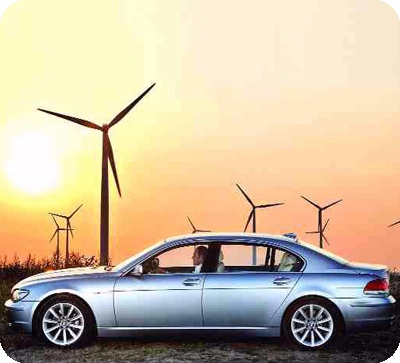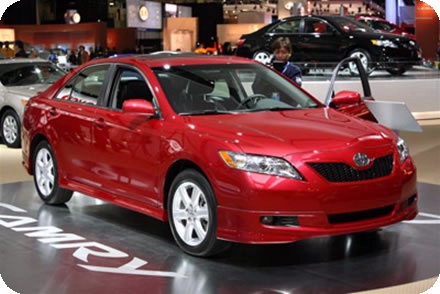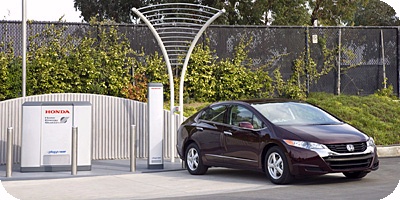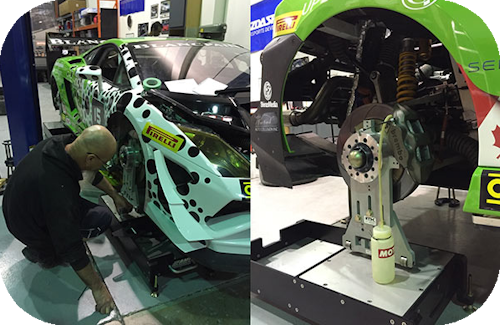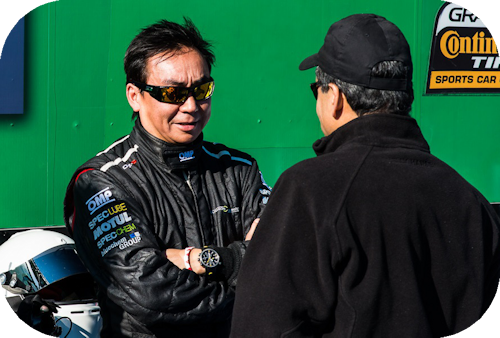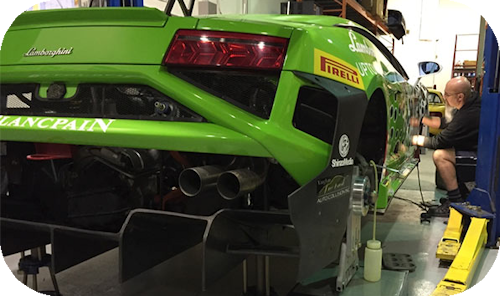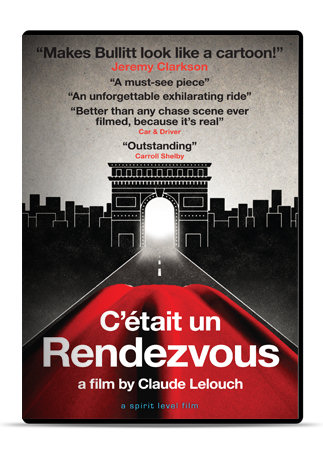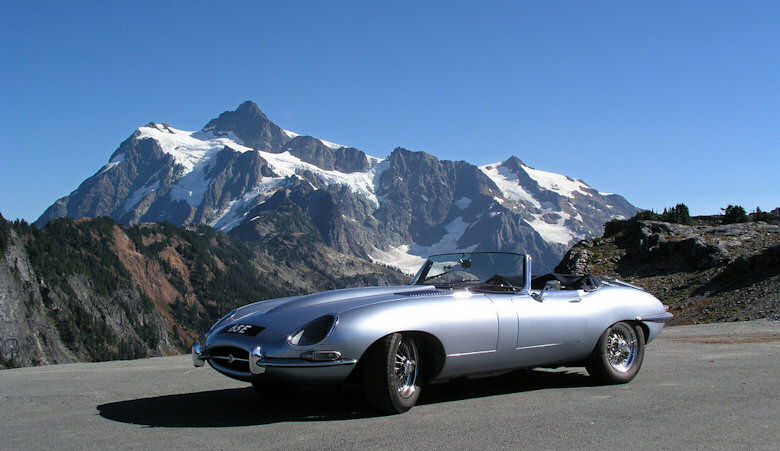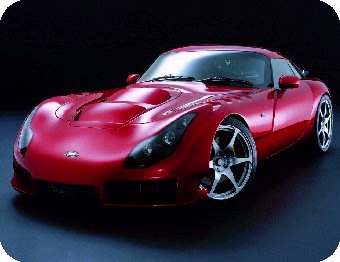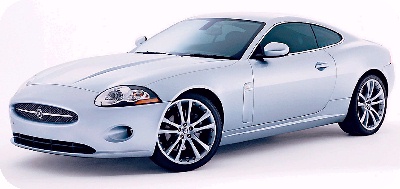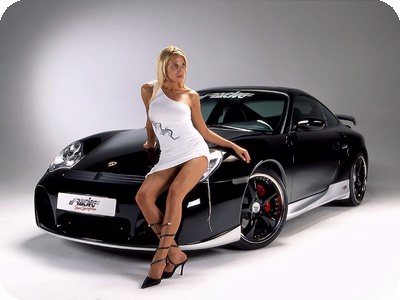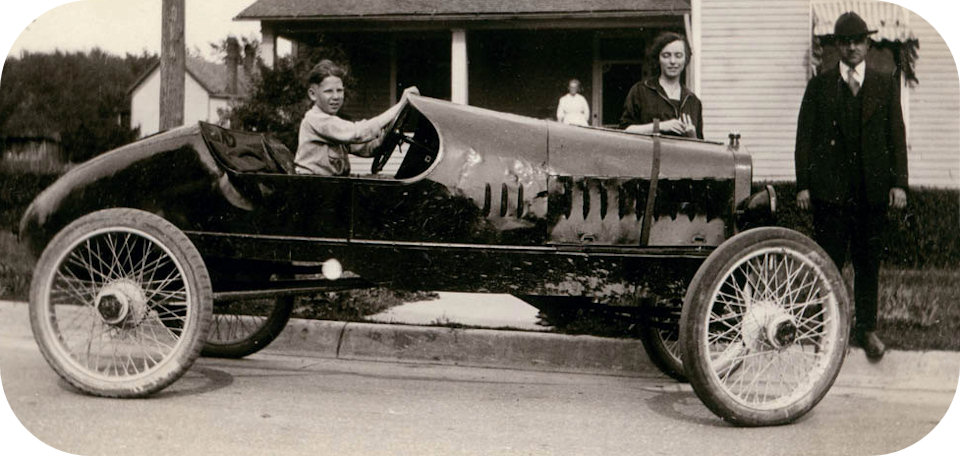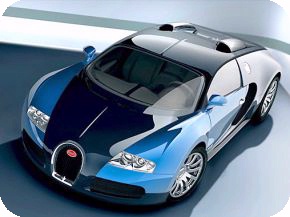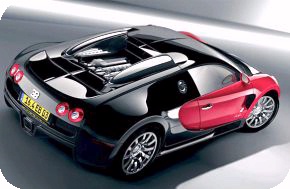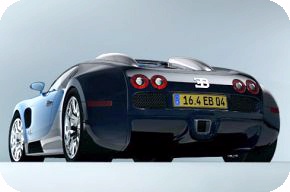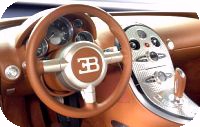 |
|||||||||
|
Articles about Automotives
Alternative Transportation
Entertainment / Funny
General News
Reviews
Safety & the Environment
The Future of Alternative Transportation: A Pathway to Sustainable MobilityBy Chaz G. T. Patto - June 2023. As the world grapples with the challenges of urban congestion, air pollution, and climate change, alternative transportation solutions are emerging as a promising pathway toward sustainable mobility. From electric vehicles and autonomous technology to shared mobility services and cycling infrastructure, the future of transportation is being reshaped by innovative approaches that prioritize efficiency, environmental consciousness, and improved quality of life. In this article, we explore the transformative potential of alternative transportation and the key trends that are shaping its future. Electric Vehicles (EVs) and Infrastructure: Electric vehicles have gained considerable momentum in recent years, with advancements in battery technology and increased charging infrastructure. The shift toward electric mobility not only reduces greenhouse gas emissions but also decreases dependence on fossil fuels. As battery costs continue to decline and charging infrastructure expands, EVs are becoming increasingly accessible and convenient for consumers. Moreover, governments worldwide are introducing incentives and regulations to promote EV adoption. With ambitious targets to phase out internal combustion engine vehicles, countries like Norway and the Netherlands are leading the way. The widespread adoption of EVs is expected to drive innovations in battery technology, charging infrastructure, and renewable energy integration, further accelerating the transition to a cleaner transportation system. Autonomous Vehicles (AVs) and Mobility as a Service (MaaS): Autonomous vehicles, with their potential to enhance safety, reduce traffic congestion, and optimize travel efficiency, are poised to revolutionize transportation. While full-scale deployment of AVs is still on the horizon, numerous trials and pilot programs are underway worldwide. AVs have the capacity to transform personal car ownership models into shared mobility systems, fostering the concept of Mobility as a Service (MaaS). MaaS integrates various transportation options, including ride-sharing, public transit, and micro-mobility, into a seamless and interconnected network. By leveraging data analytics and advanced algorithms, MaaS platforms can offer tailored, on-demand transportation solutions, reducing the need for private car ownership and improving overall urban mobility. However, challenges related to safety, regulations, and public acceptance remain to be addressed before autonomous vehicles and MaaS can reach their full potential. Active Transportation and Cycling Infrastructure: Promoting active modes of transportation, such as walking and cycling, is gaining prominence as a sustainable solution for short-distance travel. Investing in cycling infrastructure, pedestrian-friendly streets, and dedicated bike lanes not only reduces carbon emissions but also improves public health and creates more livable cities. Many cities are implementing initiatives to encourage cycling, including bike-sharing programs, secure parking facilities, and urban planning that prioritizes non-motorized transportation. Additionally, the emergence of e-bikes and e-scooters has further enhanced the appeal of active transportation by providing convenient and efficient alternatives to traditional modes of commuting. Shared Mobility and Collaborative Solutions: The rise of shared mobility services, such as car-sharing, ride-hailing, and scooter-sharing, has disrupted traditional transportation models. These services offer cost-effective and flexible alternatives to private vehicle ownership, reducing traffic congestion and parking demand. Furthermore, the integration of shared mobility with public transit systems can create efficient multi-modal networks, where users can seamlessly switch between various modes of transportation for their daily commute. This collaborative approach to transportation optimizes resource utilization and enhances the overall efficiency of urban mobility. Final Thoughts: The future of alternative transportation holds great promise for sustainable mobility. The convergence of electric vehicles, autonomous technology, shared mobility services, and active transportation presents an opportunity to reimagine how we move within our cities. By embracing these innovations and investing in supportive infrastructure and policies, we can create transportation systems that are environmentally friendly, efficient, and accessible to all. However, realizing this future requires collaboration between governments, industries, and communities. Overcoming challenges related to infrastructure development, regulatory frameworks, public acceptance, and equity will be crucial in ensuring a successful transition to alternative transportation. By prioritizing sustainable mobility solutions, we can create cities that are cleaner, more livable, and future-ready for generations to come.
Race Car Engines Test Fuel, Oil and Cleaners
By R.C. - June 2015.
There's a lot more to auto racing than just being a great race car driver with a fast car. The car itself is a testing ground for specially formulated liquids relating to engine propulsion, machine lubrication, and cooling metals. The liquids used to clean the engine between races can also affect the performance of the automobile. While the track tests drivers on curves and straight stretches, the car is testing these fluids by using them, and competing with them in these exciting circumstances.
Sponsored by numerous parts and products manufacturers, Paragon Competition Racing Team has just returned to their home garage in North York Ontario from racing at the Lamborghini Blancpain Super Trofeo in Monterey California. This event is one of the largest single manufacturer (Lamborghini) races in the world, and because everyone is driving the same cars, it tests the drivers really well, and it also tests automotive products in a relatively level playing field. Research and development scientists become race enthusiasts when they pay racing teams (sponsors) to brandish their logos, but also to collect data inside the cars.
Joe Chan is a professional race car driver whose career was recently detailed on Eligible Magazine How To Be a Professional Race Car Driver.
Professional race car driver Joe Chan is a good example of a life long enthusiast who has wisely created and grown a synergistic business that enables his passion for racing. The Guru blog details how engine system cleaners and other sponsors help Joe race cars and thus enable his addiction to the excitement of racing high performance automobiles.
Right after each race, the car is thoroughly cleaned and small computer chips are accessed inside the vehicle for information relating to the machine performance of the automobile, the engine temperatures and RPM, the cooling and exhaust ventilation systems etc. The exterior of the vehicle is also caressed and inspected, and the body of the car is searched for dents or any new abrasions. All the hoses and filters are checked and cleaned. You can read all the details relating to how Paragon Competition Racing Team cleans and maintains their Lamborghini race car on CityNet Magazine in an article perfectly timed to appear during the Montreal #Grandprix wknd.
In that article Joe is quoted saying, “We strip the car down to its shell. In our [Lamborghini] series the engine and transmission is sealed so the task is to clean and inspect everything around the engine and transmission sub frame which is stripped-down accordingly. Then we recalibrate and reassemble all of the components. Dampers are rebuilt, and bearings are all repacked and re-installed on the car.” which sounds time consuming but of course its a labour of love as the racing team mechanics obsess over their car.
Once the race car’s engine is exposed, the crew flushes and replaces all fluids used in the race. The Paragon Team uses Bluechem Canada products. 'When we service the fuel system, we clean the fuel injectors internally by running Bluechem fuel system cleaner in a tank of gasoline." After cleaning the inside of the engine, the master mechanic will perform a compression tests on all cylinders, and the results are recorded and kept in a database where they may or may not be accessed by manufacturers and other R&D professionals. You can watch Ryan Wilford demo video of Bluechem Fuel System Cleaner product on YouTube.
And its not just fluids which are tested in every race. Ever wonder why each race car's rubber tires are delivered to the track wrapped in puffy white plastic bags? The racing team keeps them clean and out of direct sunlight in these puffy jump suits because the soft rubber will oxidize if the tires sit for too long in direct sunlight or even in the open air. Tires are the connection point between the car and the road; in Formula 1 racing the tires are provided to all teams equally direct from the sponsor. From 2011 onwards, the Italian manufacturer Pirelli is the sole tyre supplier.
|
|
||||||||
|
License Plate Trading and Collecting
By Charles Moffat - November 2014
Some people collect license plates from cars. It is a bit like people who collect postage stamps, old coins, hockey/baseball cards (I have an old Wayne Gretzky card from 1980s I should sell sometime), card games - or if you are very rich like Jay Leno, you collect antique cars. Collecting license plates varies between the people who like them because they are old, because they are from different states/provinces or even different countries, and also sometimes just because they are unusual or unique. And then there is the matter of personalized license plates - license plates which say something funny, mention the name of the driver (eg. BOBSCAR) or sometimes even just a reference to the person's occupation (eg. PLUMBR). Some countries (Canada, the USA and UK) allow personalized license plates, while others like Italy currently don't allow personalized licensed plates. In the UK they even allow people to trade personalized license plates and have websites like Plate Trader where people can trade or sell their personalized license plates - which reminds me of the one Seinfeld episode where Kramer accidentally gets a license plate that says ASSMAN and later trades it to a proctologist (a doctor that specializes in posteriors). The hosts of the BBC show "Top Gear" may have been wishing they had traded in their license plate for something less provocative when they were forced to leave Argentina because they had a license plate which referred to the Falklands War (the Falklands War was a war between Britain and Argentina during the 1980s in which Argentina invaded the Falkland Islands - owned by the British - and then was summarily stomped upon by the British who immediately took it back). So the hosts of the show arrived in Argentina with their personalized British license plates making fun of Argentina's role in the Falklands War, an act which resulted in protests against them and forced the hosts to leave the country in a hurry. So yeah. Some people take their license plates very seriously. And cannot take a joke apparently. One of the personalized license plates was reportedly H982 FKL, which refers to 1982, the year of the Falklands War. So it wasn't even that funny. After being evicted from Argentina the hosts should have finished making the rest of the episode in the Falkland Islands. It would have made much more sense and all the British residents of the island would not have been quite so upset about a license plate which to them would have been seen as patriotic. I am curious to know if that is what they ended up doing. The TV episode has yet to air, it was meant to be aired in December as a Christmas Special. I wish Top Gear would come back to Canada again. They have not been back here since they filmed their expedition to the North Pole (they drove several Toyota Helix trucks to the North Pole to see if it could be done). The license plate on the main truck used during the filming was TY07 HLX, a fine example of personalized license plates at work.
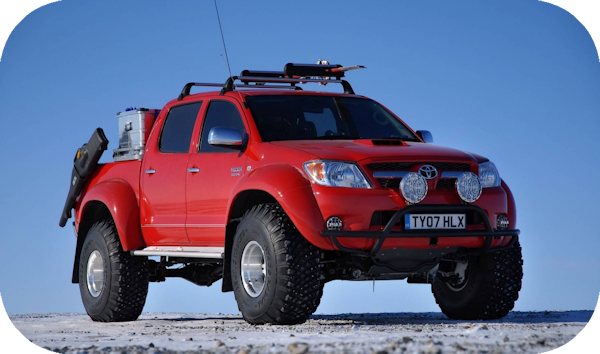
The Need for Visual Speed
For those of us who can't afford a really nice automobile, but love to watch and appreciate the performance of a vehicle then we're left with only a few real options. #1. We could watch and re-watch films like Bullitt, various James Bond films and basically any film that has a car chase or racing in it. Including Batman Begins, Smokey and the Bandit, and Herbie. #2. We can watch TV shows like Top Gear, which is produced by the BBC, and is basically a car review show, but they also go overboard and have ridiculous races to the North Pole, across the Spine of Africa, through the Bolivian Jungle and Desert, from Iraq to Israel without getting Shot... and getting chased by rednecks in Alabama.
#3. We can watch car enthusiast videos made by filmmakers. Films like “C'était un Rendezvous”, which is about a man racing through Paris streets in a hurry to meet a girl for a rendezvous. And really all it comes down to is our obsession with speed and the exhilaration that comes with it. We love that sense of danger and doing something so fast, so dangerous... and yet somehow, thanks to the marvels of engineering, the auto manages to stay on the road and doesn't crash. In film-making there are really two kinds of car chases. #1. The ridiculous kinds with lots of jumps, cop cars crashing into each other, scenes where the good guy jumps across a gap on the train and the bad guy crashes into the train. #2. The more gritty and realistic car chases, which may seem boring if you're used to lots of explosions in your films. Outside of car chases however, which are always choreographed regardless of whether they are trying to be ridiculous or realistic, are films which are real because they're essentially "Reality TV". Perhaps this is one of the reasons why the BBC show Top Gear is so popular. Its because in addition to being a automobile review show, its basically a reality TV show. Sometimes the hosts of the show even get injured, like on September 20th 2006 when Richard Hammond, one of the hosts of Top Gear, crashed a Vampire jet car powered by a Bristol-Siddeley Orpheus turbojet engine... and rolled it quite a few times. But thankfully survived. Hammond was travelling at 288.3 mph (464 km/h) at the time of the crash, but when the jet car overturned and the roll cage dug into the ground he was still going at 232 mph (373.4 km/h), with the top of his helmet dragging along the ground. He is bloody lucky to be alive. The crash was due to one of the tire's blowing up, as frequently happens when racing since the tires sometimes just can't take the pressure. The same thing could have happened when Claude Lelouch was filming “C'était un Rendezvous”. The Formula One driver hired by Lelouch was reportedly driving a Ferrari 275 GTB through the streets of Paris at illegally high speeds, which later resulted in the finished film being banned for sale due to a public outcry about illegal racing on Parisian streets. The driver could have just as easily got himself killed if he missed a turn, one of the tires could have exploded (just like Hammond's did) and any number of mishaps. The film had evidently broken some laws in its effort to be made and Lelouch was arrested soon after the first showing of the short film. Subsequently banned the film went underground and was selling bootleg copies under the table for many years. Eventually however people lose interest. In a world that has since embraced extreme sports, street racing, UFC, and the more idiotic American sports that make Nascar look tame... Well then a French chap racing through Parisian streets really isn't that big of a deal any more to the average person. But to an automotive and driving enthusiast the short film is a piece of automotive film history. Something worth collecting. And its been remastered into High Definition by Spirit Level Film and re-released on DVD and BlueRay. Even Jeremy Clarkson, the primary host of Top Gear, had great words to say about the film. "Makes Bullitt look like a cartoon!" says Jeremy Clarkson. See the trailer below.
So how much is it? Well its being sold for £14.99, which means if you're a serious automotive film enthusiast then its not going to break your wallet. When you consider a venti iced mocha at Starbucks is $5 then its not really that much. And if you are like me (a person who has every single episode of Top Gear made [including the Aussie version] then you're probably a collector of automotive films. Eg. I bought a DVD copy of Bullitt just for the car chase scene. I really had very little interest in the rest of he film, which I felt was plot and cinematically inferior to the Dirty Harry films, but I wanted to see it just for the car chase. Let me just stop here and make an interesting point... I am sitting here typing this on my notepad computer... and watching the 18th season of Top Gear on TV right now whilst I type it. And to be perfectly honest, I've seen all the episodes at least 3 times each. Sometimes more, because some episodes are certainly my favourites. eg. Whenever its really hot outside the episode I like to watch the special episode where they drive to the North Pole.
Its just pure entertainment. And what is more bizarre is when I show such episodes or even short clips to friends (whom don't even drive or even hate cars) they still enjoy watching the show. And I think it comes down to the fundamental concept that people enjoy speed. They may not likes because of environmental reasons, but show them a beautiful automobile racing across a desert and being driven by three British blokes, and they forget all about their hatred of cars and develop an instant appreciation for the show. And I think it goes the same with anything like that. Its why children point and shout when a jet fighter flies overhead creating a sonic boom. Even as adults we still get excited when we hear and see that. And isn't that the whole point? The excitement we feel when we see something go zoom?
The Modern Car is a Work of Art
When you see a modern sportscar or supercar there are often two things that immediately come to mind: "My god what a waste of money!" and "Gee, I wish I was that rich!" They are in essence our dream cars. They look incredibly beautiful/powerful (and usually has the engine/interior to match its good looks) but we all know that sportscars and supercars are far from practical. Lets start by comparing the different sportscars available (please keep in mind we are analyzing the cars for artistic merit, not whether the car is any good):
Sports CarsAston Martin: [British] Expensive, reliable, incredibly powerful engines. Most famous for its role in James Bond movies Aston Martin is the epitome of British sportscars. My personal favourite is the 1976 Aston Martin Vantage.
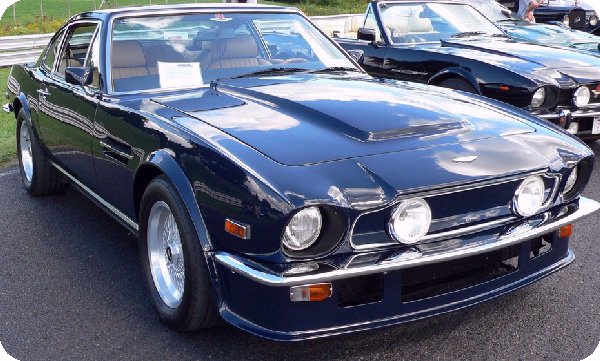
[Above] The 1976 Aston Martin Vantage. BMW M Class: [German] Relatively cheap, reliable and fairly good engines. They tend to look rather bland, boring and are usually bought by business class people. After all, if a businessman turned up in an outrageous sportscar you might think twice about signing a contract with him. Sure he's successful, but he might also be a foolish idiot. Chevrolet Corvette: [American] Very cheap, not very reliable and crappy engines. Corvettes look great but in comparison to other sportscars they really are not that fast (With one exception: The Corvette Z06 is actually faster than a Lambo around a track.) or fabulous. They are really more of a "Barbie" car than anything else. Dodge Viper: [American] Overpriced, tends to overheat but very powerful. Warning: The exhaust valves on a Dodge Viper run right past the gasoline tank. They tend to get very hot at high speeds and the car explodes. The car looks incredibly aggressive and appeals to football fans and so on, but its really nothing special to look at.
Jaguar: [British] Cheaper than an Aston Martin, less reliable than an Aston Martin, just as powerful as an Aston Martin. Jaguars are always in Aston Martin's shadow, and one step behind (both companies are currently owned by Ford). The two cars companies however make incredibly similar looking and achingly beautiful cars. Lotus: [British] Tricky to drive but a very sweet car to look at. The handling on a Lotus is so powerfully good that some drivers have difficulty steering them because they're not used to a car that is so responsive. The cars themselves are technologically a marvel and stunning to look at. Mercedes-Benz AMG: [German] Tends to be a bit plain but still a beautiful car. Essentially a more beautiful version of a BMW M Class. Mitsubishi: [Japanese] Designed to look American in the hopes of selling in America, Mitsubishi sports cars are appealing to the class of people who normally buy Mustangs or hatchbacks. They're really not anything special to look at. By emulating American cars Mitsubishi has squashed any sense of invention or imagination. The result is rather boring. MG: [British] Rather boring looking these days. And average as far as sports cars go. Morgan: [British] Morgan is more known these days for its antiques. Its a favourite amongst antique car collectors. You would have to be into antique car design to appreciate its good looks (which it does have). TVR: [British] Expensive for a sportscar, cheap for a supercar. The TVR is a borderline supercar but without the huge pricetag of a supercar (but still far more expensive than a regular sportscar). They have very fast, powerful engines and are achingly beautiful.
SupercarsBefore we compare supercars let us just stop and explain WHAT a supercar actually is: Insanely powerful, incredibly expensive, incredibly fast, very luxurious, usually only bought by millionaires and billionaires. In comparison sportscars are a dime a dozen. You could buy 10 Jaguars for the price of one supercar. Bugatti: [French] Expensive, glamourous, insanely powerful engines. The Bugatti Veyron has the most powerful engine ever built in a road legal car (it has an 1001 break horsepower engine and is the only car capable of going from 0 to 400 km/h (250 mph) in less than a minute). The car itself is quite beautiful (and an engineering marvel), but its not breathtaking. But it is a fucking amazing feat of engineering. Ferrari: [Italian] Starting to look rather plain these days. Very beautiful but rather plain. Like looking at a stereotypical blonde actress (with a boob job). It has no depth and is rather stale. Ford GT40: [American] Very fast, very sleek, very beautiful. Koenigsegg: [Swedish] Scary but beautiful with the engine to match.
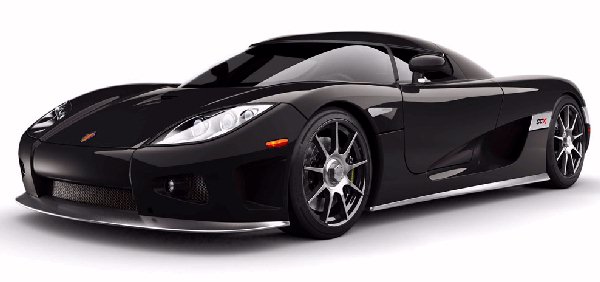
[Above] The Koenigsegg CCX. Lamborghini: Rather modernist looking, but still a great car to look at. You'd almost have to be a fan of modern art to like the looks of a Lambo. Not very fast however. The Corvette Z06 is faster around the Top Gear track.
Maserati: [Italian] Originally a racing car brand, Maserati has become known for its expensive sports cars and supercars. Its currently owned by Fiat. Their current car designs are rather rounded and curvy, but frankly look a bit like a Dodge Intrepid and is therefore starting to look pretty boring these days. Nice to look at, but not spectacular. Speed wise however, the Maserati MC12 is the 3rd fastest car in the world.
Noble: [British] Kind of boring and Ferrari-ish, but still a beauty. The Noble is basically a boring and conservative version of a Ferrari. Pagani Zonda: [Italian] Faster than a Ferrari, looks like a more radical version of a Ferrari, and is more beautiful and more interesting to look at than a Ferrari. Unfortunately, most people MISTAKE it for a Ferrari. Seems most people can't tell the difference. Porsche: [German] The Porsche 911 is considered by many to be the ultimate rear-engine car, but frankly its rather ugly and the styling has stayed pretty much exactly the same since it was first made. Yawn. Of course, when you have a supercar you probably also want a custom license plate. Carreg can provide DVLA number plates and UK personalised registrations quickly, without fuss and at a great price. They have been operating in the private number plates industry since 1988 and have a long list of happy customers.
Bugatti Veyron: Tres rapide...
When your car costs more than $1.2 million, travels over 230 mph, and hits 62 mph in 2.5 seconds, then you must be in a Bugatti. "It's a work of art that's meant to be driven," said Richard Koppelman, president of Miller Motor Cars in Greenwich, Conn., one of six U.S. dealerships that have been selling the car since the fall. "It's like a race car that has a tremendous amount of torque but it gets you there comfortably. But also, you can drive it around town and pick up your dry cleaning." The Bugatti brand is one of the automotive industry's oldest marque's, and it has plans to make a public and very loud comeback with what could well be the fastest production car to ever hit the blacktop. After what seems like years of teasing us with prototypes, mock sketches and the odd mention of a 1001 brake horsepower engine, the Bugatti Veyron is finally finished and will be sold to European markets late in 2006, and America and Asia Pacific territories after that. While the Bugatti name is essentially Italian, Carlo Bugatti (father of Ettore Buggati) left Milan for France in 1904, and the marque has since built its cars in Molsheim, France. Today, the Bugatti name is owned by Volkswagen, and the new Veyron supercar has also been styled by the Germans, yet despite this many of the die-hard Bugatti fans are still pleased with the car's appearance. The Bugatti Veyron was formally announced as ready-to-go by Volkswagen in Monte Carlo recently. The automaker also released offical images of the production car (pictured right), which is slightly different from the Veyron shown at the 2002 Geneva Motor Show. To start with, the long bodied Bugatti - which measures a 4.5 metres from grille to 'zorst, and a massive 2.0 metres wide - gets slightly re-jigged headlights and a few extra air intake apertures, such as those located just behind the front wheels.
As it stands however, the Bugatti behemoth is one very exotic proposition, both in terms of styling and performance. The twin intake snorkels mounted on the roof help funnel cool air to the mid-mounted engine, and while practical, they add a great deal of visual impact too. Volkswagen's goal was create the world's fastest production vehicle, something that could be driven on the road smoothly, or right-royally thrashed. As such, one of the first hurdles the company faced, after developing a killer 16-cylinder engine, was to make sure it was aerodynamically sound. To be able to reach speeds of more than 400km/h and still provide linear handling characteristics, the Veyron's body had to be sleek, but under the car and out of sight are the kind of ground effects more commonly seen on Formula One cars. Volkswagen paid lots of attention to the front and rear spoilers, and the company reckons that the new Veyron will hold higher corner speeds, be able to more effectively get power to the ground while exiting corners and also decelerate more rapidly under brakes thanks to all the painstaking work they've carried out in the wind tunnel. The most impressive aspect of the new Bugatti supercar has to be the 16-cylinder engine, which is located behind the driver (mid-mount) for a low centre of gravity, ergo improved turn-in and general handling characteristics.
Rather than try and squeeze 16 cylinders into a vee format, Volkswagen came up with a much more compact idea a few years ago - the 'W' configuration. In layman's terms, it's basically two 4.0-litre V8s sharing the same crankshaft, which makes it more compact than similarly sized V12s. This gargantuan 8.0-litre W16 has four valves per cylinder - for a total of 64 valves - and together with a supremely sophisticated forced induction system, it belts out 1001 horsepower, or 736kW @ 6000rpm. Just to put that in perspective, the Veyron generates more power than four of Subaru's potent WRXs put together. Made of aluminium and magnesium (to keep weight down), the 7993cc W16 powerplant has four turbochargers and four camshafts, one for each bank of four cylinders respectively. With a 9.0:1 compression ratio and variable valve timing, the quad-turbo system helps boost the car's low end, while providing a fatter torque curve at the same time: 1250Nm of torque @ 2200-5500rpm. The closest any other production car comes to this staggering figure is Mercedes' CL 65 AMG, which pumps out 1000Nm from its 6.0-litre twin-turbo V12.
The new Bugatti is fitted with a brand-spanking new 7-speed semi-manual transmission, which is operated by paddle shifters located behind the tanned leather steering wheel. On average, the twin-clutch system takes just 0.2 seconds to change gears, which is quicker (on average) than a traditional manual. In the real world, this 736kW and 1250Nm combines with the 7-speed, all-wheel drive transmission and a 1600kg kerb weight to propel the Bugatti Veyron to 100km/h from rest in 2.9 seconds. That's very quick. If that isn't enough, the four-wheel drive chunk of exotica will hit 300km/h in 14.0 seconds flat and can cruise at 400km/h with ease. The car is electronically limited to 400km/h (248 mph), though if de-restricted the 8.0-litre coupe would be capable of at least 450km/h, perhaps more if the final-drive ratio and fuel-injection mapping was tweeked. To safely and reliably accelerate to 400km/h, the Veyron makes use of custom-designed Michelin tyres, which utilise what has termed the Pax system. The tyres are capable of dealing with the stress of 400km/h speeds, and they also have a special pressure monitoring system and run-flat capability, so that even in the event of a high-speed puncture, things won't go all pear shaped. So, at the end of the day, Volkswagen has not only built one hell of a coupe, but it now also has bragging rights to the world's fastest car - and a direct swipe at the likes of McLaren's F1, Lamborghini's Murcielago and Ford's GT. The Bugatti Veyron is expected to cost roughly €750,000, which is about $1,300,000 in local currency. It is expected that a handful will make their way to Australia, but most will be sold in Europe. The new all-wheel drive Veyron has more power than the current crop of Formula One cars, and with its massive 8.0-litre, quad turbo engine, carbon fibre-reinforced chassis and aluminium body panels, there are few cars out there today that combine such technical sophistication with a look that's quite unorthodox, yet strangely appealing.
|
|||||||||
|
|
|||||||||
